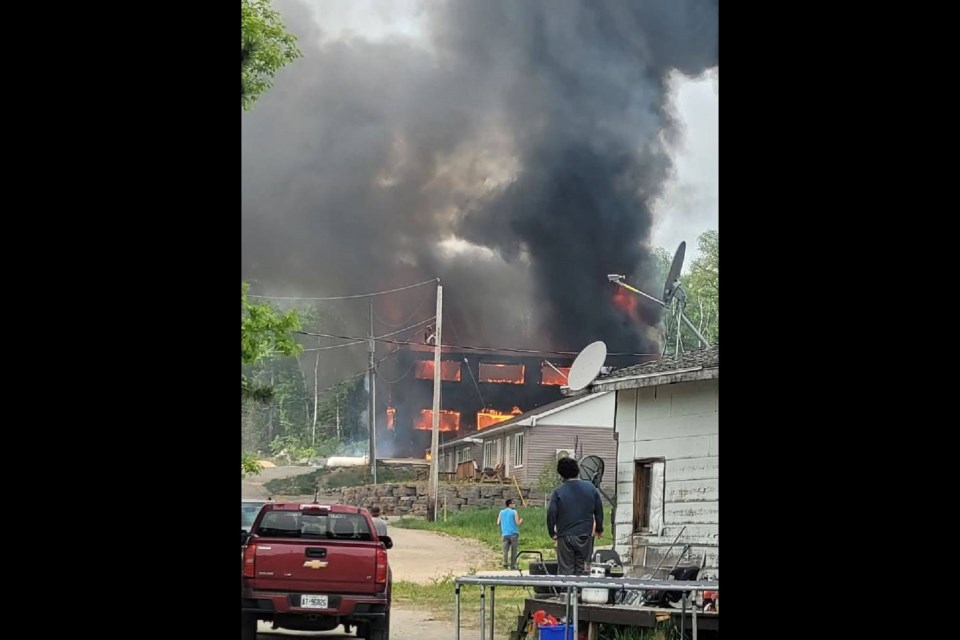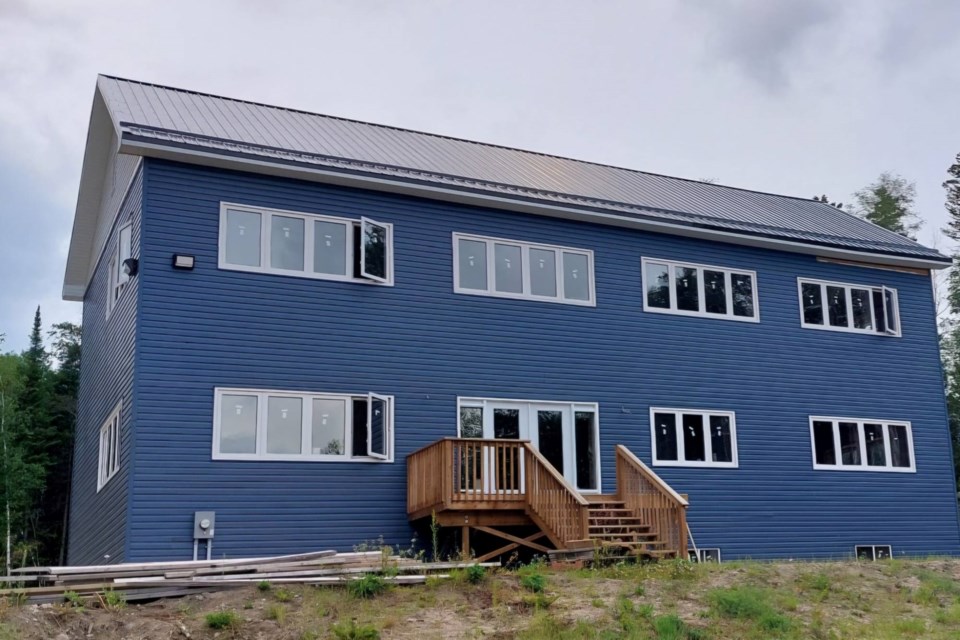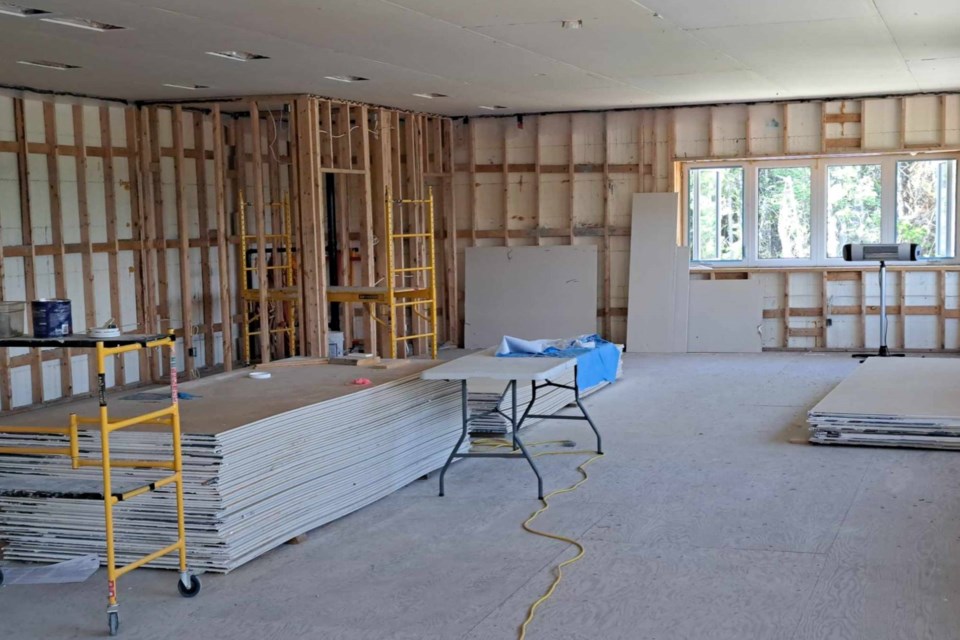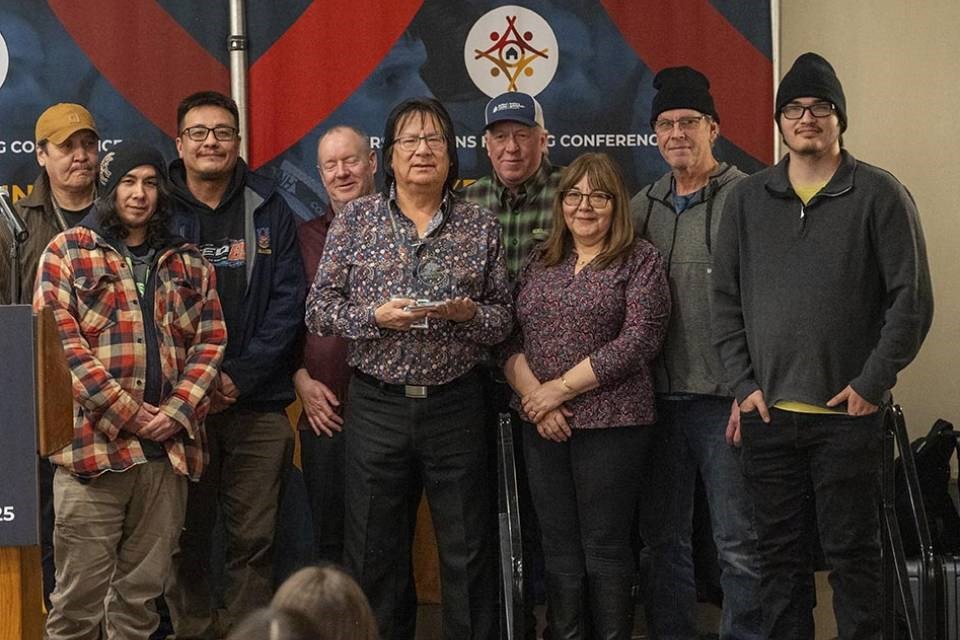In early spring, carpentry students in Hudson, in northwestern Ontario, were in the process of putting the finishing touches on their brand-new training centre when a noon-hour fire broke out, reducing the building to rubble.
No one was hurt in the June 4 blaze — the students were all on lunch break and no people were in the building at the time — but the entire facility was destroyed and years of work lost.
Still, Ziggy Beardy, project manager with the Sioux Lookout Area Aboriginal Management Board (SLAAMB), which hosts the program, knows it could have been much worse.
“The workers were in their cabins, and one of them went out and saw smoke coming out, and then it just spread really fast,” said Beardy, noting that the investigation into the cause of the fire was inconclusive.
“But the good thing about it was it was made of cement, so the fire was contained in the area. It didn't get to spread to other buildings or to the bush. So the fire was contained right in the building.”
Construction on the training centre was nearly completed, Beardy said. The building’s shell was done, windows were installed, and next up was the drywall, which had been piled inside.
But all that, as well as many of the program’s tools and equipment, was lost in the fire, as were the instructors’ and apprentices’ personal tools, since they had been left in the building while on lunch.
Even though the building was insured and they’ve catalogued the tools and equipment they lost, Beardy said he’s unsure what all will be covered under the policy.
That’s why SLAAMB is appealing to industry friends and partners for donations — of tools, equipment, or anything they can spare — to help the program get back on its feet.
“We're trying to get the word out to get help,” he said. “If any union or company is willing to help us, it would be really appreciated.”
It was a frustrating setback for the board, and personally for Beardy, who has championed the training organization’s carpentry apprenticeship program since its inception in 2019.
The award-winning, five-year program trains Indigenous participants from SLAAMB’s catchment area — comprising 25 First Nations in northwestern Ontario and serving about 30,000 people — in carpentry techniques, guiding them through to achieve their Certification of Qualification or Red Seal designation.
It’s one of several trades-related programs the organization offers.

Participants travel to Hudson, a small community in the Municipality of Sioux Lookout, from their communities to live on site, where they get a mix of classroom and hands-on learning.
The carpentry program follows the Ontario Colleges of Trades General Carpenter 403A Levels 1-4 curriculum and the Seven Generations Education Institute Canadian Carpentry Math Curriculum. Trainees are led by instruction from Red Seal carpenters and a certified drywaller.
Representatives from LiUNA Local 607 have been on site to certify trainees in working at heights, first aid, WHMIS, scaffolding, hoisting, forklift operations, and chainsaw operation.
Trainees also work with local contractors — architects, plumbers, electricians, septic technicians, and HVAC technicians — and source their materials from local suppliers, like Home Hardware, McMunn & Yates, and Dufresne Furniture and Appliances.
For its success, SLAAMB’s programming has been recognized twice, in 2022 and 2025, during the First Nations Housing Conference, held annually in Thunder Bay.

To date, various cohorts of the program have built two duplexes, a two-bay garage, a garage/workshop, and a two-storey residential unit for female trainees. The three-storey, 1,800-square-foot training centre that burned in June was to be the centrepiece of the carpentry program.
“It was very disappointing, but we're going to go ahead and build another one in the spring, once we get our settlement done with insurance,” Beardy said. “We’ll start building again.”
Previously, in his role as a project officer for SLAAMB, Beardy said he travelled to monitor the progress of builds in the member communities. During those visits, he’d see young people standing around construction sites, uncertain of what to do because they hadn’t had any training. Eventually, they’d be laid off because of their lack of construction knowledge.
“So that's where I got this idea: why don't we have a training facility, a centre, where we bring these young people over, train them so they can know what to do, so once they go back to their communities, they'll be skilled,” Beardy said.
“They'll have the knowledge to help them with their band housing programs, their infrastructure, developments. So that's been my motivation all these years, and we're seeing some light at the end of the tunnel.”

They have had some dropouts along the way, but there have been successes also. At least two of the participants from a previous cohort were hired by their home communities before they even finished the program, and two more have recently accumulated enough hours that they qualify for their Red Seal; they just need to take the exam.
“These young people that will be getting their registered designation or their certification, once they go back to their communities, I know they'll take apprentices under their wings, they'll train other young people,” Beardy said.
“So there'll be that spinoff where they'll train young people to be skilled as well in building housing.”
For more information on how you can help, contact Ziggy Beardy at zbeardy@slaamb.on.ca.




